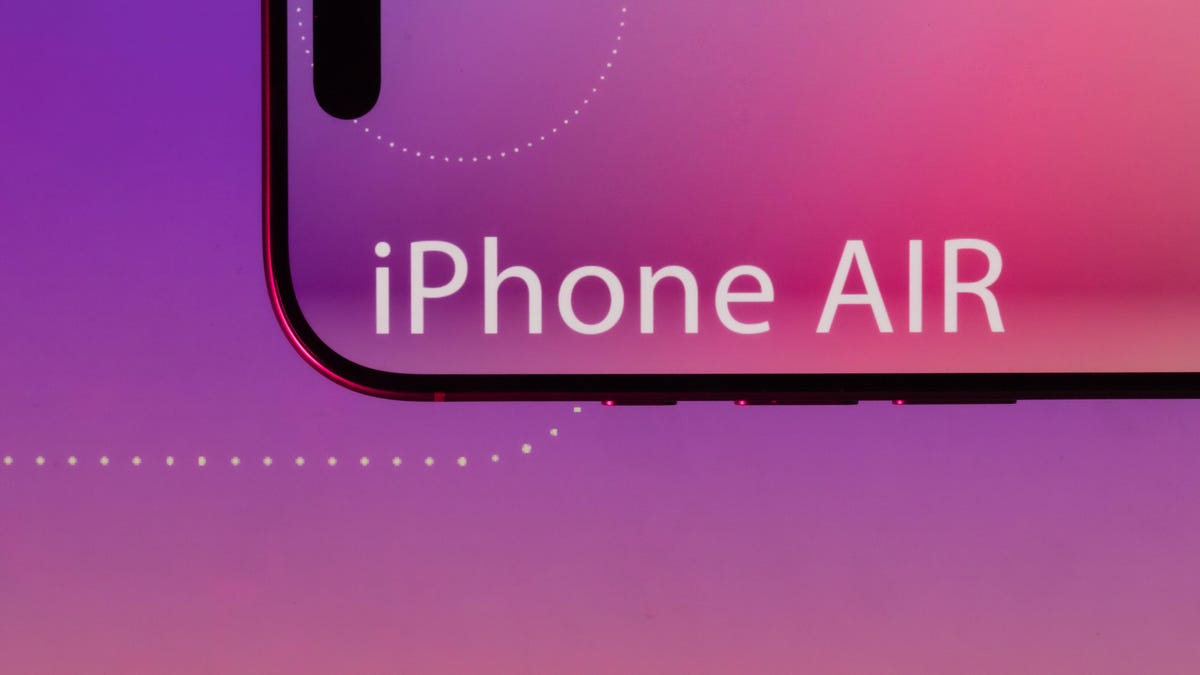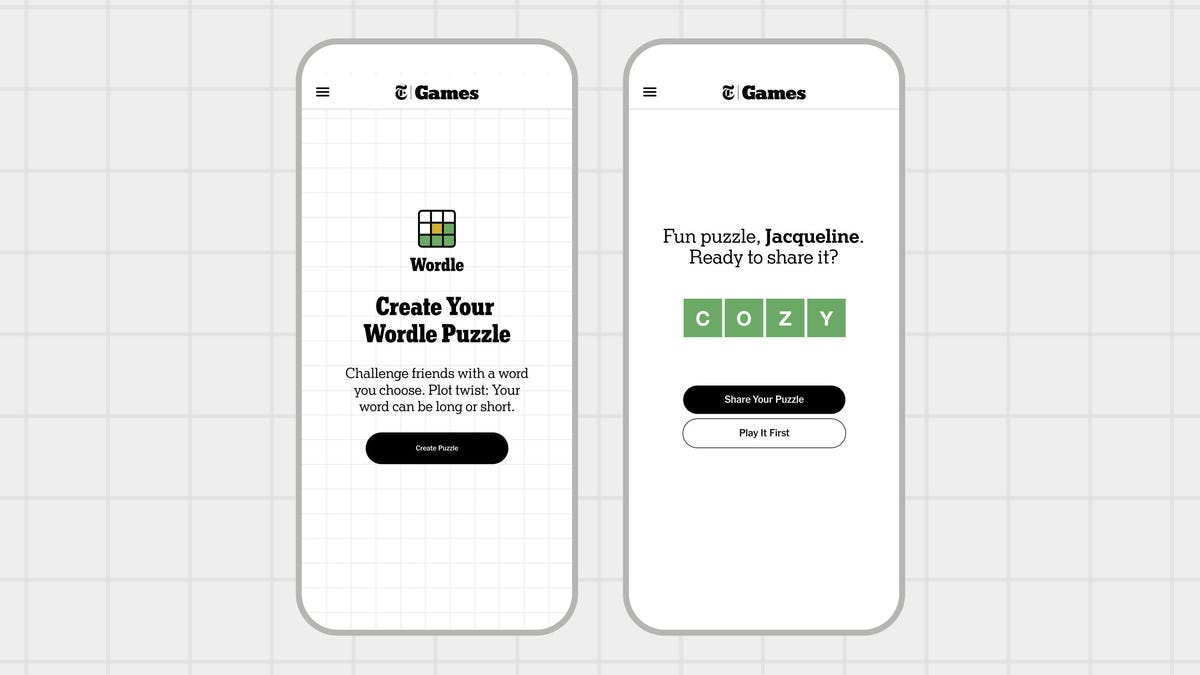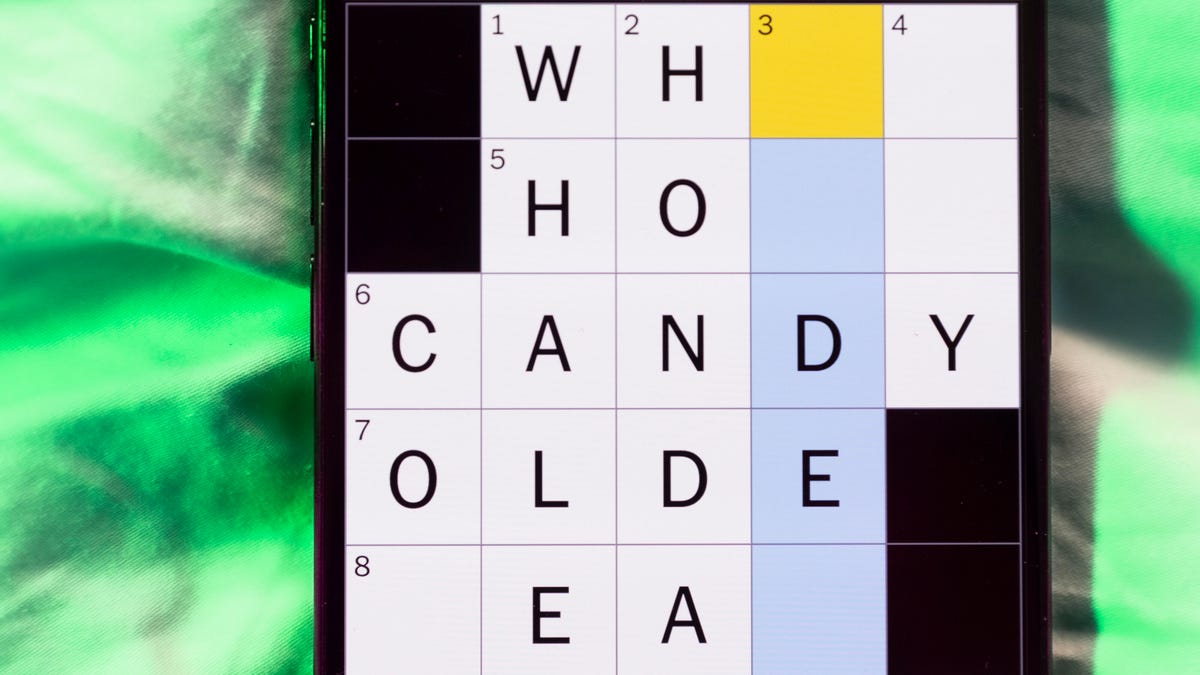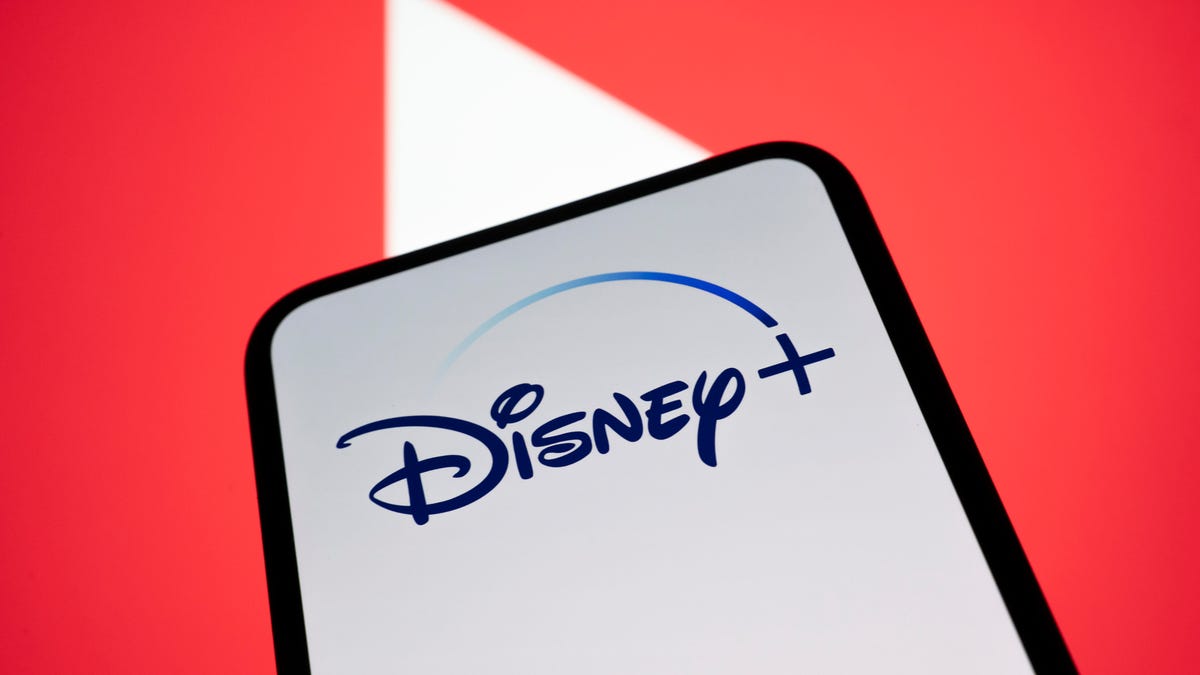Technologies
Every iPhone 17 Air Rumor: What to Know About a Slim New iPhone
Speculation around a thinner iPhone raises questions about battery capacity and camera features. Here’s what we know so far.

Rumor has it, we may soon see an ultra thin iPhone. The rumored iPhone 17 Air — or it might be called the iPhone Slim — could potentially replace the current iPhone Plus amid Apple’s next iPhone release in the coming months.
The buzzed-about «Air» is getting a lot of attention in the iPhone 17 rumor mill, but the prospect also has people asking if Apple may have to sacrifice features to get a super thin phone.
Here’s the skinny on what we could expect with the newest iPhone.
iPhone 17 Air release date: Is the slimmer iPhone coming this year?
For nearly a decade, Apple has held an event in September to announce its new phones. This year we expect Apple to reveal the iPhone 17 series, including the rumored iPhone 17 Air.
If the iPhone 17 Air rumors are true, Apple would be the latest to join the ultra-thin phone trend this year. Last week, I got to try out Samsung’s new lightweight Galaxy S25 Edge after previewing it and a slew of shockingly thin phones at the Mobile World Congress in March.
The iPhone 17 lineup may be the last to follow this fall-release model, according to Apple analyst Ming-Chi Kuo and a report from The Information. Starting with the iPhone 18, Apple will reportedly split its phone releases so that lower-cost iPhones launch in the first half of the year (previously reserved for iPhone SE models) and higher-end pro models are announced in the latter half. That would likely mean a rumored iPhone 18 Pro, Pro Max, Air and new foldable iPhone model could debut in fall 2026. Keep in mind that an iPhone Flip or Fold has been rumored for years.
You’ll likely be able to preorder a new iPhone the Friday after the announcement, with the phone shipping a week later.
What will the iPhone 17 Air cost?
Early rumors about an iPhone 17 Air hinted that it could cost even more than the iPhone 17 Pro, but a March Bloomberg report suggested the phone could cost around $900. That price tag would align with the rumor that the «Air» could replace the Plus, which currently costs $899. For comparison, Samsung’s Galaxy S25 Edge starts at $1,100.
However, there’s also the question of how tariffs could affect the price of an iPhone. Amid President Donald Trump’s ongoing tariff drama, Apple has mostly escaped additional taxes by stockpiling inventory and getting most of its products on a tariff exemption list.
Apple has moved some production of US iPhones to India to avoid the steeper tariffs imposed on China. However, Trump recently said he pushed Apple CEO Tim Cook to move US iPhone production from India to the US. How much all of this could affect iPhone prices is yet to be determined.
Regardless of how tariffs play out, Apple is expected to raise the price of the iPhone. These price hikes are rumored to start with the iPhone 17 line, so prepare now to pay more for «Air.»
iPhone 17 Air camera: potential downgrade?
Among the rumored potential sacrifices Apple may have to make to get a skinnier phone is limiting the camera features.
The rumored iPhone 17 line is getting a new camera bar that extends across the width of the phone. But Front Page Tech shared an iPhone 17 Air video in February that showed a physical mockup of the phone based on rumors. One of the more surprising reveals was a smaller camera bar with one lens on the left, suggesting the «Air» phone has a single rear camera, similar to the iPhone 16E ($599). It’s not clear if the camera would be the same as the 16E or if Apple would go the route Samsung did and include the main camera from the iPhone 17 Pro.
The single camera theory is backed up by analyst Ming-Chi Kuo and a Bloomberg report, which said that the rumored Air may not have the ultrawide and 5x telephoto lenses that have become staples of Apple’s premium iPhones.
In a bit of good news, it’s also rumored that the front-facing «selfie» camera on all iPhone 17 models, including the Air, will be upgraded to 24 megapixels, according to analyst Jeff Pu.
iPhone 17 Air vs iPhone 17 Pro
It may be getting a lot of attention, but the rumored Air appears to be less an advanced Pro model and more a replacement for the Plus.
However, rumors are that the Air would have a 6.6-inch display, according to analysts Jeff Pu and Ming-Chi Kuo. If accurate, that would mean the Air’s display is slightly smaller than the iPhone 16 Plus, with a 6.7-inch display, but larger than the iPhone 16 Pro, which features a 6.3-inch display. The iPhone 16 Pro Max leads with a 6.9-inch display. It’s unclear if the 17 Air’s screen would be a Pro Motion display like the one found on iPhone Pro models.
If the rumored Air lives up to its name, then the biggest potential advantage it could offer over a Pro is its size and weight. A Bloomberg report from March notes that the iPhone Air could measure 5.5mm thick, compared to the iPhone 16 Pro at 8.25mm.
Mac Rumors reported that a leaker on the Korean-langauge Naver blog, going by «yeux1122,» said that the rumored iPhone 17 Air weighs approximately 145 grams (5.11 ounces). Compare that to the iPhone 16 Pro, which weighs in at 199 grams (7.03 ounces). If this rumor proves true, the Air would be just slightly heavier than the iPhone 13 mini, which weighs 141 grams (4.97 ounces).
Bloomberg’s report also notes that the iPhone 17 Air is expected to have super slim bezels compared to the rest of the line, along with a Camera Control button and a Dynamic Island cutout in the display.
iPhone 17 Air battery life expectations
Among the challenges of slimming down an iPhone could be figuring out how to reduce the battery size without compromising battery life.
Initially, it was assumed that a skinnier iPhone would simply have a reduced battery life since there would be less space to house a large battery. But more recently, AppleInsider reported that a skinnier iPhone might use a silicon-anode battery that could help extend its battery life.
Yeux1122 said the battery capacity is 2,800mAh, based on details that originate with «mass production confirmed sample,» according to MacRumors. It added that a high density battery in the Air could increase its «actual capacity» by 15 to 20%.
If the rumored iPhone 17 Air does use the silicon battery technology, it would be the first iPhone to do so.
Are iPhone Air rumors and leaks to be trusted?
Rumors are just that. The speculation leading up to the iPhone’s release is often based on insider knowledge or leaked information from the teams working on the iPhone’s design, but those plans can continue to evolve and are not necessarily reflected in the final product. We’ll only be able to confirm these rumors with certainty when Apple officially releases the next iPhone and we can see it for ourselves.
Technologies
How to Make and Share Your Very Own Wordle Puzzles
Wordle obsessives, you can now make personal inside joke puzzles to send them to friends.

Wordle’s an immensely popular word game (we post the answers daily) from The New York Times, but it’s not the most personal game in the world. Answers such as GUISE and PERIL are tricky, but generic. Now, Wordle fans who have dreamed of making their own puzzles can test their friends and family by creating their own Wordle creations up to seven letters in length.
Here’s how to do it.
Don’t miss any of our unbiased tech content and lab-based reviews. Add CNET as a preferred Google source.
- No surprise, you have to be a New York Times Games or All Access Subscriber to use this feature. If you are, you’ll find the Create a Puzzle option available from the top menu above today’s Wordle.
- Enter a word, and the site will tell you if it is available. Real Wordle limits you to five-letter words, but the puzzle-making feature lets you choose words between four and seven letters.
- The usual dictionary rules apply, and so curse words, some pet names and obscure inside jokes are essentially out. If your cat is named TANGO, that’s there, but RINGO is not an option. You can drop a proposal with a single word like MARRY, but MARRYME will be rejected, since that’s two separate words.
- Word chosen, you can then fill out your name and add an optional hint, and the feature will generate your puzzle with a link you can send around. Unlike standard puzzles, your puzzle doesn’t appear to reset after a day, so whoever you send it to doesn’t need to rush to solve it.
While you must be a subscriber to create your own personalized puzzle, you can share it with anyone — they only need the link, not a subscription, to complete your Wordle.
Looking for the most recent Wordle answer? Click here for today’s Wordle hints, as well as our daily answers and hints for The New York Times Mini Crossword, Connections, Connections: Sports Edition and Strands puzzles.
Technologies
Today’s NYT Mini Crossword Answers for Saturday, Nov. 15
Here are the answers for The New York Times Mini Crossword for Nov. 15.

Looking for the most recent Mini Crossword answer? Click here for today’s Mini Crossword hints, as well as our daily answers and hints for The New York Times Wordle, Strands, Connections and Connections: Sports Edition puzzles.
Need some help with today’s Mini Crossword? The Saturday puzzle is always the longest of the week, so it’s not quite as easy as the other days. Today’s wasn’t too terrible. Read on for the answers. And if you could use some hints and guidance for daily solving, check out our Mini Crossword tips.
If you’re looking for today’s Wordle, Connections, Connections: Sports Edition and Strands answers, you can visit CNET’s NYT puzzle hints page.
Read more: Tips and Tricks for Solving The New York Times Mini Crossword
Let’s get to those Mini Crossword clues and answers.
Mini across clues and answers
1A clue: Theatrical role
Answer: PART
5A clue: Capital of Vietnam
Answer: HANOI
6A clue: Father of a «fur baby»
Answer: CATDAD
7A clue: Words often accompanied by a ring
Answer: MARRYME
8A clue: Whirling currents
Answer: EDDIES
9A clue: Put up, as a statue
Answer: ERECT
10A clue: Race that’s about half the length of a half-marathon
Answer: TENK
Mini down clues and answers
1D clue: SpongeBob’s starfish friend
Answer: PATRICK
2D clue: Despite it all …»
Answer: ANDYET
3D clue: Wanders here and there
Answer: ROAMS
4D clue: Company with a «To Go» stain remover
Answer: TIDE
5D clue: Become firm
Answer: HARDEN
6D clue: Small group of soldiers
Answer: CADRE
7D clue: What parallel lines never do
Answer: MEET
Technologies
Touchdown! Disney, ESPN and Other Channels Are Back on YouTube TV
YouTube TV subscribers no longer need another streaming service — or to visit a sports bar — to watch the NFL or college football.

YouTube TV subscribers, your channels — and your football — are back. Disney and YouTube said Friday night that the two companies had reached an agreement. YouTube TV subscribers lost all of Disney’s channels, including ESPN and ESPN2, on Oct. 30. Those who wanted to watch NFL or college football on ABC, ESPN or ESPN2 or Disney family-friendly hits such as Bluey, had to find other alternatives.
«We’re happy to share that we’ve reached an agreement with Disney that preserves the value of our service for our subscribers and future flexibility in our offers,» a YouTube spokesperson said. «Subscribers should see channels including ABC, ESPN and FX returning to their service over the course of the day, as well as any recordings that were previously in their Library. We apologize for the disruption and appreciate our subscribers’ patience as we negotiated on their behalf. «
Don’t miss any of our unbiased tech content and lab-based reviews. Add CNET as a preferred Google source.
The companies said in a statement that they reached a multi-year deal and were already restoring the channels to YouTube TV.
According to YouTube, subscribers should see content and saved recordings restored over the next 24 hours. So if you don’t have them back yet, they should show up soon.
I’m a YouTube TV subscriber myself, and as of 5:30 p.m. PT on Friday, Disney, ESPN and other channels have been restored for me. As a die-hard Minnesota Vikings fan (yes, I know), I added Fubo TV temporarily, but I won’t be keeping that subscription.
According to the statement, the deal will include the restoration of the channels, plus other items. The unlimited version of ESPN’s new direct-to-consumer service will now be made available at no additional cost to YouTube TV subscribers. Subscribers will also have access to a selection of live and on-demand programming from ESPN Unlimited inside YouTube TV. Also, select networks will be included in various genre-specific packages, and there will be the ability to include the Disney Plus Hulu Bundle as part of select YouTube offerings.
«This new agreement reflects our continued commitment to delivering exceptional entertainment and evolving with how audiences choose to watch,» Disney Entertainment Co-Chairmen Alan Bergman and Dana Walden and ESPN Chairman Jimmy Pitaro said in the statement. «It recognizes the tremendous value of Disney’s programming and provides YouTube TV subscribers with more flexibility and choice. We are pleased that our networks have been restored in time for fans to enjoy the many great programming options this weekend, including college football.»
Disney-owned channels were pulled on Oct. 30 when the agreement between the two companies expired.
According to The Hollywood Reporter, the resulting 25-day blackout was the longest in recent memory for Disney.
Here’s a full list of the channels that were removed due to the dispute:
- ABC
- ABC News Live
- ACC Network
- Baby TV Español (Spanish Plan)
- Disney Channel
- Disney Junior
- Disney XD
- ESPN
- ESPN Deportes (Spanish Plan)
- ESPNews
- ESPNU
- ESPN2
- Freeform
- FX
- FXM
- FXX
- Localish
- Nat Geo
- Nat Geo Mundo (Spanish Plan)
- Nat Geo Wild
- SEC Network
-

 Technologies3 года ago
Technologies3 года agoTech Companies Need to Be Held Accountable for Security, Experts Say
-

 Technologies3 года ago
Technologies3 года agoBest Handheld Game Console in 2023
-

 Technologies3 года ago
Technologies3 года agoTighten Up Your VR Game With the Best Head Straps for Quest 2
-

 Technologies4 года ago
Technologies4 года agoBlack Friday 2021: The best deals on TVs, headphones, kitchenware, and more
-

 Technologies4 года ago
Technologies4 года agoVerum, Wickr and Threema: next generation secured messengers
-

 Technologies4 года ago
Technologies4 года agoGoogle to require vaccinations as Silicon Valley rethinks return-to-office policies
-

 Technologies4 года ago
Technologies4 года agoOlivia Harlan Dekker for Verum Messenger
-

 Technologies4 года ago
Technologies4 года agoiPhone 13 event: How to watch Apple’s big announcement tomorrow
